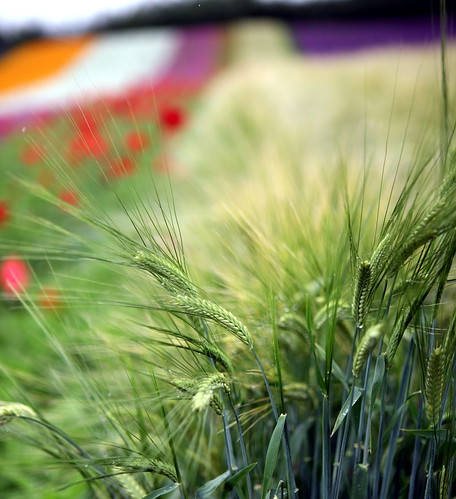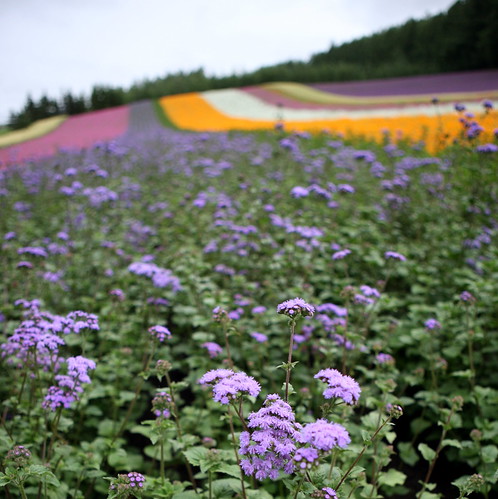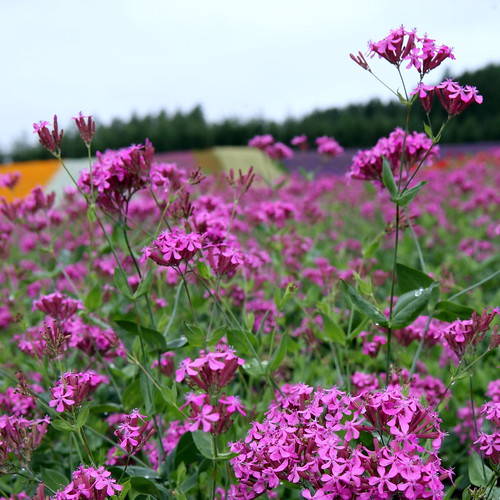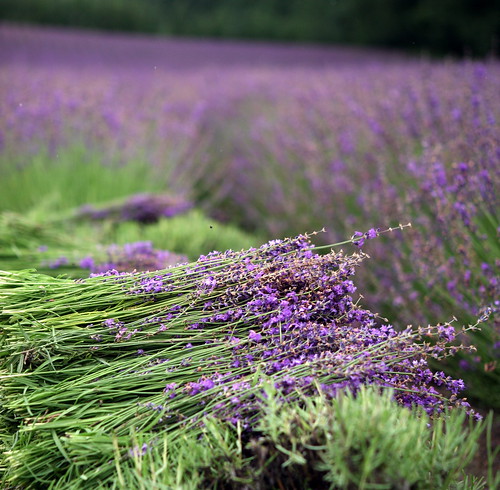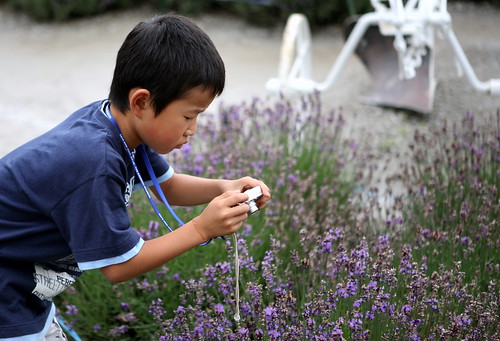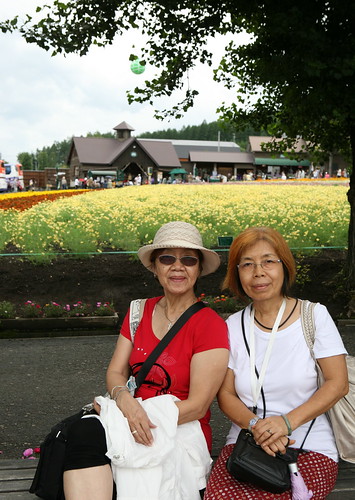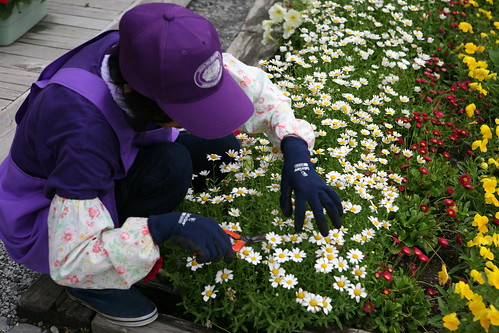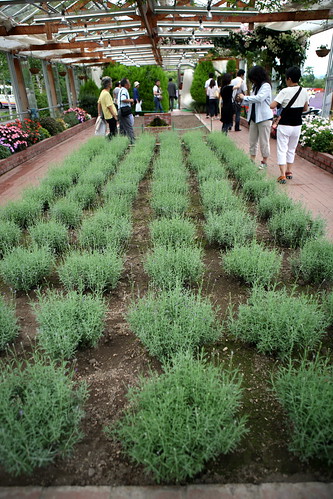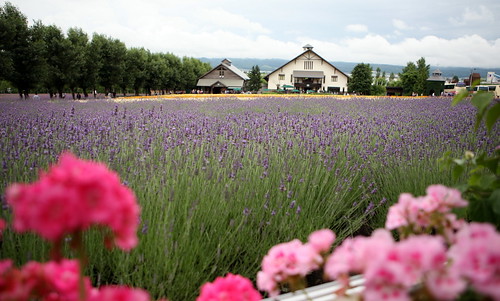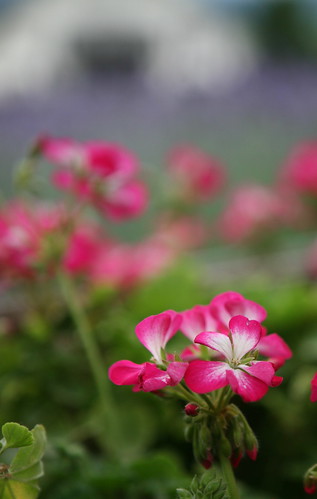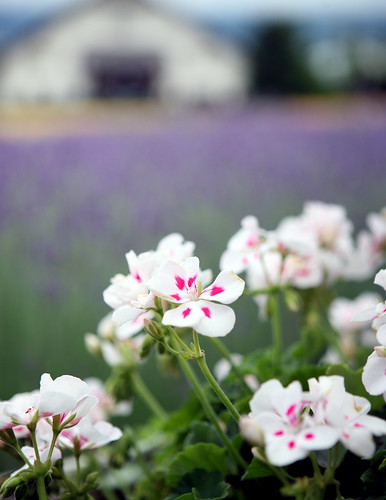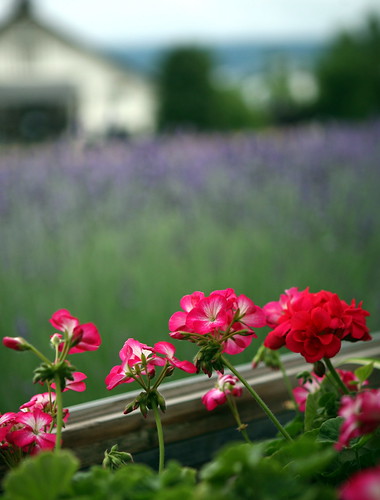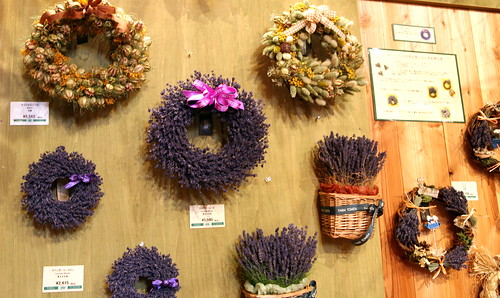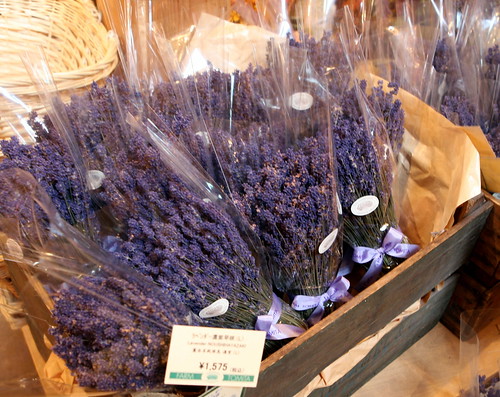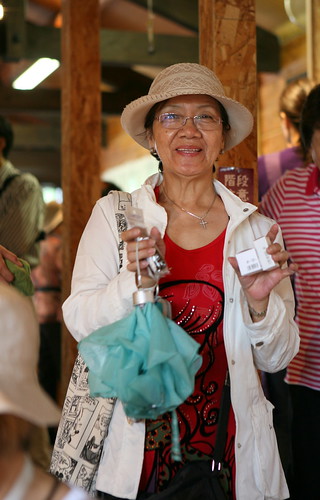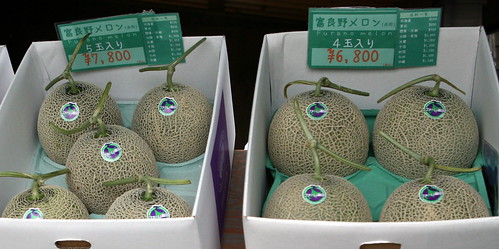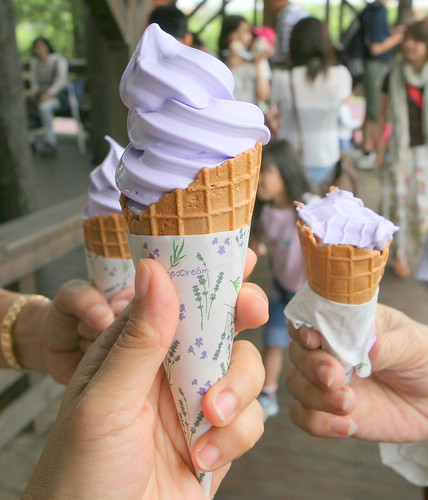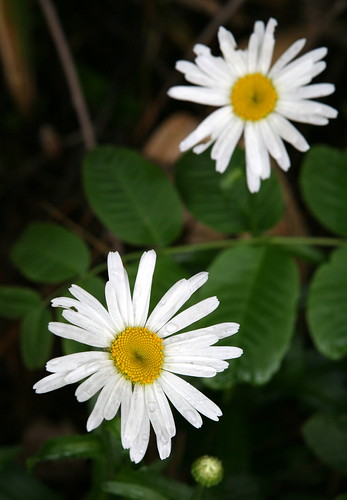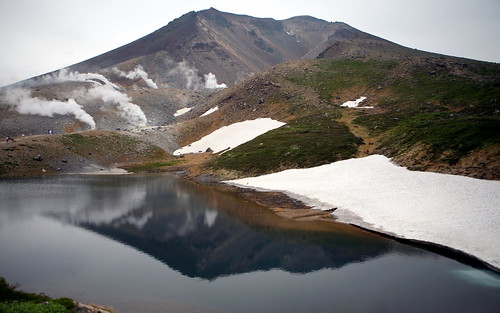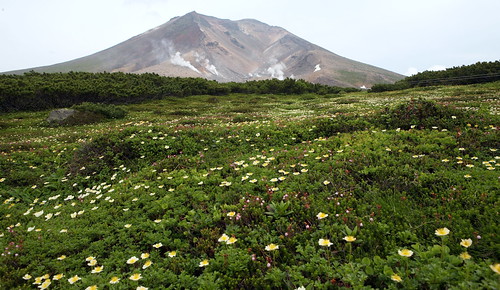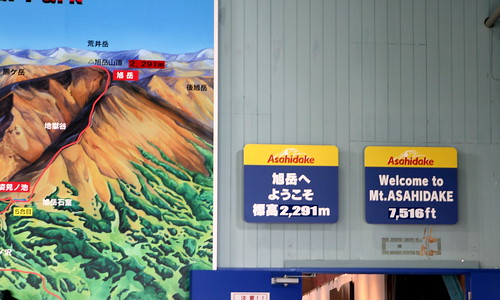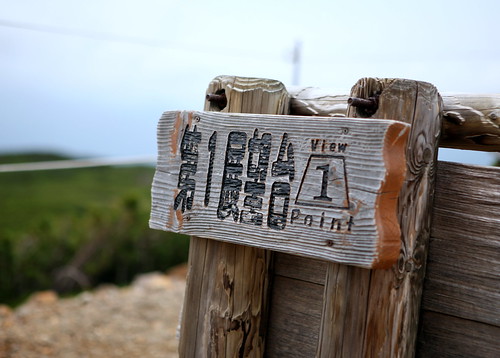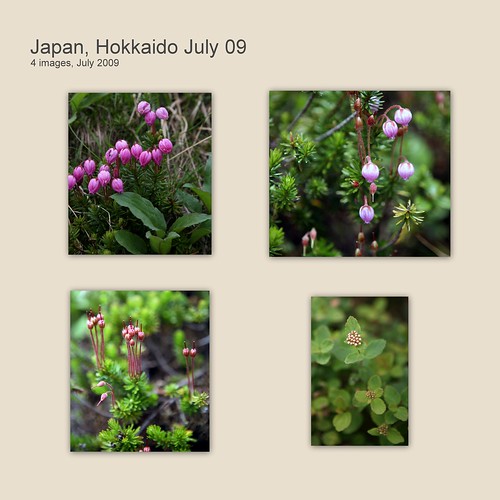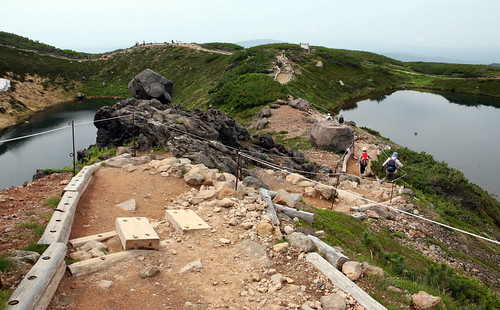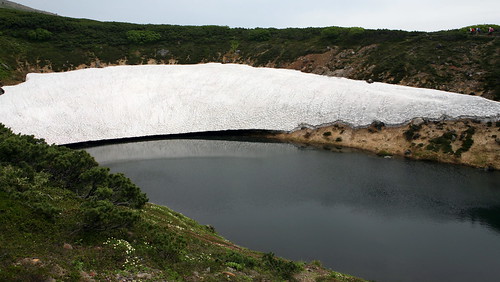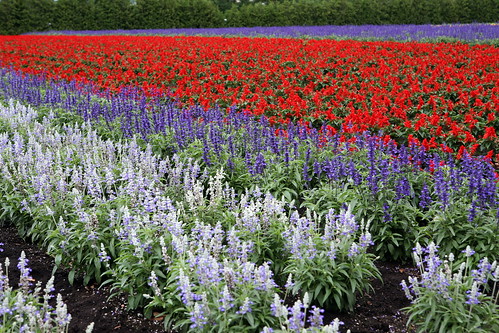 I have had so much trouble in putting out this post and the only reason was too many pictures to choose from. It took a long time to decide which to post. It is all about flowers, flowers and more flowers. We went totally head over heel in love with this place and I think for once none of us were complaining about hunger as our senses were so filled with the wonders of colors and scents.
I have had so much trouble in putting out this post and the only reason was too many pictures to choose from. It took a long time to decide which to post. It is all about flowers, flowers and more flowers. We went totally head over heel in love with this place and I think for once none of us were complaining about hunger as our senses were so filled with the wonders of colors and scents.
From Furano we took the JR sightseeing 'Norocco-go' train to the special 'Lavender Station' which only operates during the summer months.
 An old steam train but refurbished into a very quaint automobile made this short trip very disneyland-like.
An old steam train but refurbished into a very quaint automobile made this short trip very disneyland-like.The sunflower field along the Furano-Narafurano route.
Only the Norocco-go train stops here. If taking a normal JR train, get off at Naka Furano station and it takes about 25 minutes to walk to the farm.
 About three minutes walk from the Lavender Station will bring you to Tomita Farm, a paradise for all flowers lovers.
About three minutes walk from the Lavender Station will bring you to Tomita Farm, a paradise for all flowers lovers.Entrance to the farm is free and you can wander around at your own pace. Besides the flower fields, there are many other attractions like the Hanabito House, Dried Flowers House, Potpourri House, Perfume House, Green House and a distillery workshop.
 These were the first flowers that greeted us. Despite the rainy weather and cloudy sky, it gladdened our hearts to see such a lovely sight.
These were the first flowers that greeted us. Despite the rainy weather and cloudy sky, it gladdened our hearts to see such a lovely sight. This is the most well known image of this farm - the rainbow field which is created by rows of different flowers and herbs planted on a gentle rolling hill. This image is made famous when they were used in the nationwide Japan Railway calender.
The wheat plants created a golden hue for the rainbow field.
These provided the lilac shade,
Another shade of purple.
And a sea of white.
The entire farm was blanketed in rainbow colors and the air perfumed with the most relaxing and refreshing fragrance of the lavender.
Lavender bushes in a field was mesmerizing, visually and aromatically, felt like I have arrived in heaven. It was a feast for the eyes, mind and soul.
I felt we arrived at the farm a week too late as the lavender were beginning to wilt and ready to be harvested.
But I managed to find a few newly bloomed stalks. Individually, a stalk of lavender exudes exquisite aura and delicate sweetness. An amazing display of wonder of nature but such short life span...
Caught this young budding photographer in action. He was so totally engrossed with his endeavor, he didn't realize I was shooting him. The flowers do have that effect on most of us...
Except for these two beauties who were happily competing with the blooms...
Every shrub was shown the same tender loving care by the hundreds of workers scattered all over this farm.
Young lavender plants for sale. So tempted to bring home one but knew it would not survive our environment here in Malaysia.
A green house in the farm that enables visitors to witness the beauty of the lavender bloom even in the cold winter month.
Looking out from the greenhouse.
This trip would not be complete without shopping... the potpourri house.
Amazing display of dried flowers and plants.
Dried flowers wreaths and things.
Bouquet of dried lavender for about 1500 yen.
and me too....
And many other spin-off products of lavender.
Another famous produce of Hokkaido and also of Tomita farm... the rock melons.
Ultra sweet and succulent... definitely lived up to it's reputation and price.
Sweet sweet indulgence...rock melon ice-cream
and lavender ice-cream.
A simple lunch but one of the best potato croquette I have ever had.
These and...
these to further brighten your day!
Have a lovely weekend.




